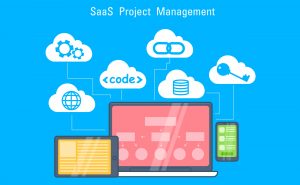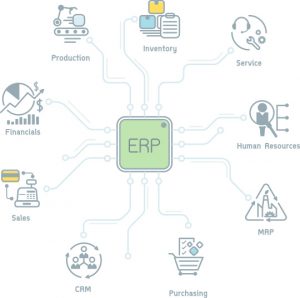What is Professional Services Automation (PSA) ERP and which one suits you best ?

Professional services automation (PSA) software offers an alternative to the array of separate project management, time tracking, invoicing, resource planning, business intelligence, and collaboration tools used by many project teams. This guide provides you an introduction to PSA software and offers resources for organizations considering an integrated software solution for managing project delivery.
ERP (Professional Services Automation) PSA ?
PSA applications help professional services providers manage client engagements throughout the project lifecycle. A project starts when a sales opportunity is created, the deal is closed, and resources are allocated to deliver the work. The cycle nears completion when invoices are issued and cash is collected.
PSA software establishes a consistent process for planning, managing, and measuring the performance of each project throughout its lifecycle. By centralizing business processes and data, services can be delivered more predictably, and repetitive manual processes streamlined or automated. It is analogous to Enterprise Resource Planning (ERP) software, and PSA is sometimes referred to as ERP for services organizations.
Common PSA capabilities include the following:
- Accounting
- Billing, Invoicing
- Calendar Management
- Client Access (e.g., through a Client Portal)
- Team Collaboration
- Document Management
- Project Management
- Proposal Generation
- Resource Management
- Software Integrations (e.g., to a CRM)
- Time and Expense Tracking
Who Benefits from Professional Services Automation (PSA) Software?
Organizations delivering billable work stand to benefit the most from PSA software. By centralizing project delivery data, PSA solutions can provide visibility into performance metrics such as revenue, cost, utilization, and profit margins. Because the dollars involved in professional service delivery grow with headcount, the financial benefits of a well-implemented PSA solution scale with company size.
PSA software was originally developed for the professional services sector, which includes consultants, lawyers, professional service teams, and others. The software is now earning wide adoption across several project-based industries, including these:
- Information Technology (IT), especially IT services departments and firms
- Marketing and Communications, by both client-facing agencies and internal departments
- Architecture, Engineering, and Construction (AEC)
- Business Consulting
What are the Advantages of PSAs?
While the advantages of a specific PSA solution depends on its capabilities (and how they are used), the central benefit of PSA software is enabling people who are responsible for business performance to manage and measure service delivery at scale. Reporting features enable account and resource managers to identify trends and allocate staff to match demand. Executives can see where the business is performing well and where there are opportunities to improve certain areas.
Effective PSA applications help organizations do three things:
- Easily Manage Projects (e.g., by reducing spreadsheet time)
- Optimize Resource Use (e.g., by improving utilization rates)
- Drive Stronger Margins (e.g., through greater reporting and visibility)
PSA tools can also help organizations gain control over their project, financial, timeline, and resource data. Organizations often choose to adopt and/or upgrade their PSA tools when they need to increase headcount, when their demand increases, when their range of services needs to grow to meet client needs, when they expand their market geographically, or when projects, deadlines and timelines become more numerous and difficult to manage using manual processes. A great PSA tool keeps top thinkers out of spreadsheets and more engaged with the data at a high level, to make decisions that drive greater profitability.
What are the Disadvantages of Professional Services Automation (PSA) Software?
PSA software can be purchased commercially off the shelf (COTS) or built in house. Both require implementation, business process reengineering, and user training, all of which incur costs in staff time or budgets. COTS solutions may have limited integrations and limited customizability; organizations opting to purchase PSA software must select an option that fits a majority of their feature needs, integrates with the systems they already use, or offers an API to build their own integrations. Homegrown solutions come with their own limitations, including costly maintenance, upgrades, and integration build-out costs. Homegrown solutions are ideal for organizations that have a great need for custom functionality combined with significant internal expertise and financial resources to sustain a custom software application indefinitely.
Weaknesses of PSA Tools
PSA solutions were designed primarily with top-down planning and management in mind, and the reality is that a majority of non-management workers in a services organization access it only to enter time and expenses on a weekly or infrequent basis. Approximately 70% of the actual work happening in a services business —project management, task management, communication, team collaboration, and working with clients and subcontractors—is happening outside of the PSA solution.
The most significant weakness with PSA tools is that they do not facilitate collaboration required today. Collaboration is key across teams, and client collaboration is even more important in services.
To fill some of the gaps and help with day-to-day operations, workers have incorporated additional productivity tools, often referred to as Collaborative Work Management software.
Collaborative Work Management (CWM) tools enable employees to bridge task management and collaboration. Today, a collaborative work environment allows workers to communicate across silos, borders, and offices. Now, companies are using both PSA as well as CWM tools, and continue to pile on more and more applications to the technology infrastructure one at a time. Today the average worker uses 5-8 additional niche solutions that support the major areas of communication and collaboration needs across the business. Without the adoption of these applications, services operations would come to a halt.
Choosing a Professional Services Automation (PSA) Software
PSA applications typically advertise similar capabilities (e.g., accounting, resource planning, project collaboration) but vary widely in the depth of those capabilities. User interfaces also differ significantly, which has implications for user adoption and team morale.
At a minimum, the system should:
- Include details about current and future availability to better understand who is available to take on project work at the task level
- Track skills and proficiencies to improve the matching of consultants to projects and key financial data related to resources (e.g. cost and bill rates) that will impact the profitability of projects
To select the right PSA solution for your team, start by identifying your organization’s objectives and needs. Try to state your requirements in terms of business objectives (e.g., “Organization will use this PSA to see who is spending time on which projects”) rather than in overly prescriptive features (e.g., “Organization wants a button that generates a PDF of today’s time entries”). Next, prioritize your requirements into must-haves and nice-to-haves. You will likely need to make tradeoffs between different applications that offer different capabilities. Remember to consider qualitative requirements like user experience, since this will impact the success of your software implementation.
Consider a Single Operational System of Record
The biggest systems opportunity for services organizations is to build their technology around a single source of truth. Organizations see better visibility, predictability, and agility by bridging core planning, executional, project accounting, and analysis systems in a single operating environment. This infrastructure becomes the core of the organization and can improve processes by packaging up best practices into frameworks, guidelines, analytics, and insights required to successfully operate in today’s fast-moving services environment.
Operational System of Record Enables the Following Functionality:
- Resource Management
- Project Management
- Conextualized Collaboration
- Project Accounting
- Real-Time Business Intelligence
Make a Final Evaluation
Once you have a draft list of requirements, you can begin evaluating software providers. Software comparison sites like GetApp and Capterraprovide lists of leading applications and reviews where current customers describe their experiences.
Once you’ve developed a list of vendors to consider, schedule personal demos to see how the applications perform. After each demo, ask yourself (or your team) core evaluation questions. Here are some to get you started:
- Does this app meet my team’s key requirements?
- Would my team enjoy using this app on a daily basis?
- How would my stakeholders access the app? (Can I get mobile access?)
- How does the app handle security?
- How does the app link to my other applications (e.g., accounting, billing, CRM, sales)?
- What tracking functions (e.g., budget, invoices, milestones, resource utilization) does the app offer and how well?
- How does the app handle the unique aspects of my business (e.g., custom fields)?
- How easy does the app make it to build custom reports?
- How does the app display information? Can my stakeholders easily spot trends?
See Why Professionals Choose Manavate for PSA
Manavate offers a wide range of plans for services delivery providers, including plans from basic project management to advanced PSA. If you’re ready to learn more, schedule a call with a Mavenlink representative to discuss your requirements and get set up with a free trial. We are also available to answer questions 24/7. Hence today organizations that provide PSA are often spread on several countries (and/or continents) the ERP PAS based on cloud solution would be the best one .
“Mavenlink is the uncomplicated way to drive better results and achieve a halo of trust with our customers. It has completely transformed our business. We’re more nimble, collaborative, and financially sound than ever.”


























